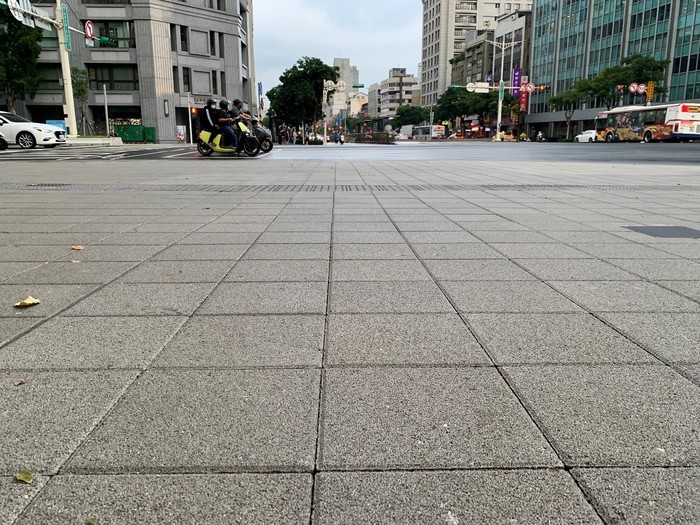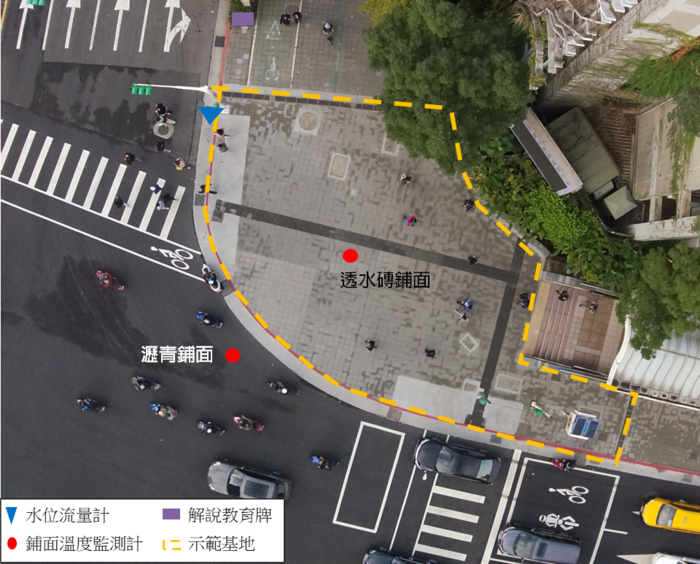Porous Sidewalks Help Cooling: Study


Article courtesy of Taipei Times (Content by Rachel Lin and Kayleigh Madjar / Taipei Times Staff reporter, with staff writer)
Porous sidewalks installed in Taipei last year have been found to reduce surface temperatures by up to 3°C in addition to absorbing excessive runoff, researchers said on Thursday. The Taipei City Government has been experimenting with new building materials since launching a “sponge city” initiative in 2015 to improve drainage and flood controls in the capital. Seeking to reduce runoff along Zhongxiao E Road, which is prone to flooding, the city replaced its asphalt and concrete sidewalks with a more porous material.
To test the effectiveness of the renovation completed late last year, researchers from the National Taipei University of Technology’s Water Environment Research Center installed a sensor in front of Zhongxiao Xinsheng MRT Station Exit 4 to monitor how much water was absorbed by the pavement. They discovered that the material was not only effective at reducing runoff, but also had a lower temperature than other types of pavement.
Data gathered from March 9 to Aug. 31 showed that the sidewalk can reduce runoff by 13.8 to 63.4 percent, or about 40 percent on average, compared with traditional materials, the center said. Its surface temperature was on average 2.5°C cooler than asphalt, center director Lin Jen-yang (林鎮洋) said. The highest difference in temperature was recorded on July 26, when the porous surface was 3°C cooler than asphalt amid an atmospheric temperature of 37.4°C, Lin added. The material can absorb more water because its porous structure allows runoff to seep into the ground instead of accumulating on top, he said. In sunny weather, water evaporating from within the porous pavement helps cool down the surface and the air above it, he added. “You can think of it like a sponge absorbing water,” Lin said. “The less runoff there is, the better the pavement is at absorbing rainwater.”
University president Wang Hsi-fu (王錫福) praised the renovation, saying that the wider sidewalks provide safer access to the school and complement the porous sidewalks installed on campus. The university is the first school in the nation to use the more efficient pavement on a wide scale, directing the runoff to shallow decorative gullies surrounding the campus, Wang added.
Taipei Times Article: https://www.taipeitimes.com/News/taiwan/archives/2021/09/20/2003764677






